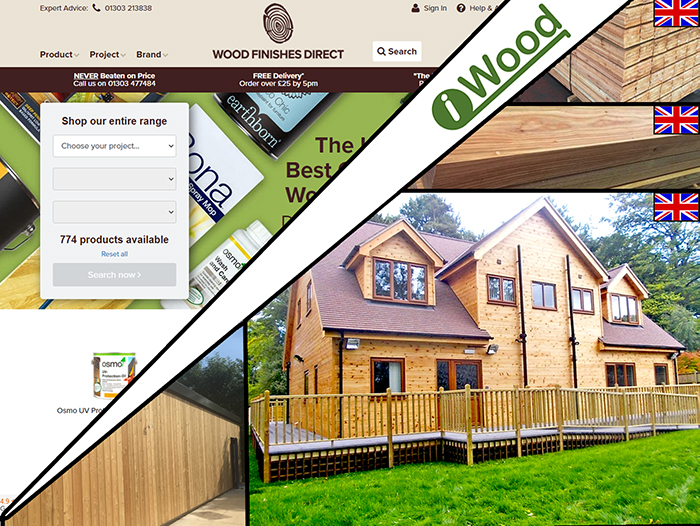Articles: Does Larch Cladding Need Treatment?
British Larch
Native British Larch is one of the most cost effective timbers we have available due to its impressive strength and durability properties for a very affordable cost. It can be graded to C16 more easily than many other softwoods and is the only softwood species that does not need a 20,000mm2 cross sectional area to meet C24.
Additionally, because of its inherent resistance to the elements, treatment isn’t entirely necessary depending on what you use it for and whether or not you want to prevent silver-greying.
British Larch is supplied fresh sawn to be cut and machined into various profiles. Because of its low maintenance, British Larch is ideal for outdoor applications such as cladding and structural beam use.
If you’ve read an article from iWood before, you’ll no doubt be familiar with the standard silver-greying of all timber because of UV rays from the sun which occurs naturally and doesn’t affect the integrity of the timber. To prevent this from happening, we suggest looking into a UV protector treatment.
We often direct our customers to a company called Wood Finishes Direct who are the experts in wood treatments. These UV treatments are often multipurpose and also seal the timber which protect it even further from issues such as mould, algae and fungal attack.
Siberian Larch
European Siberian Larch is the more premium quality larch and comes with its own advantages. The harsh Siberian environment bolsters the timber making it naturally extremely hardy by softwood standards making it ideal for high traffic areas such as decking where its hardiness helps prevent scuffs and markings.
Additionally, similar to its English cousin, Siberian Larch can be left untreated as it has both low moisture movement and has strong natural resin to prevent rot and decay.
Available in two grades Siberian Larch is normally quite characterfully knotty but can but ordered in the cleaner “unsorted” grade which still retains the strong grain aesthetic you would expect but with a lower knot content.
Whilst it is not mandatory to treat both British and Siberian Larch, we do recommend it to ensure you get the best potential out of your end product.
From an aesthetic standpoint, the silver-greying process does appeal to some of our customers and there are treatments available that will protect the timber against other factors and reduce moisture movement. This will improve the overall quality and lifespan of the timber whilst allowing for a natural UV degradation.








 Main Menu
Main Menu

